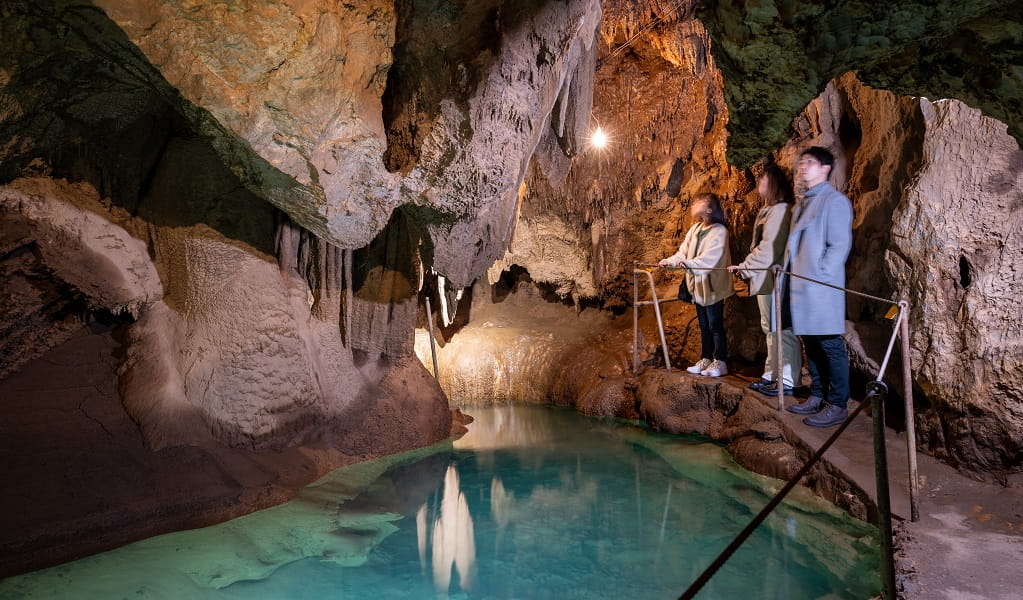Jenolan Caves guided tours
Jenolan Karst Conservation Reserve
Overview
Book in for a tour of Jenolan Caves, in the Oberon area. Whether you're staying at the caves or visiting from the Blue Mountains or Sydney, it's worth the trip to see the world's oldest cave system.
- When
- Each tour and package starts and ends at different times. Visit the Jenolan Caves website for further information.
- Accessibility
- Medium
- Grade
- Medium. An average level of fitness and mobility is required, and some tours have minimum age restrictions. Each cave tour involves many steps, and each tour is a different length.
- Price
- Each tour or package has a different price. Visit the Jenolan Caves website for details.
- Meeting point
- Jenolan Caves House
- Bookings
- Book online, or call Jenolan Caves on 02 6359 3911 or 1300 763 311 for further information.
- Please note
- As cave tour tickets are limited, please book and pay well in advance. Meals and overnight stays are also available for pre-booking.
- The nearest fuel is at Mount Victoria and Oberon.
The following Jenolan caves are now open for guided tours in Jenolan Karst Conservation Reserve:
- Chifley Cave: Discover this cave's unusual history and wide variety of chambers and formations, including delicate straws and exquisite spar crystal
- Imperial Cave: This cave runs along an ancient riverbed and is mostly level. It's a good choice for less mobile visitors. This tour includes the Diamond Branch, featuring the 'Gem of the West' and other delicate crystal formations in pure white, pink and apricot.
- Orient Cave: It's reputedly one of the world’s most beautiful caves, and is thickly hung with calcite crystal formations
- Temple of Baal Cave: This cave's 2 chambers are awesome, with astonishing formations such as the 9m-high ‘Angel’s Wing’ cave shawl.
A visit to Jenolan Caves is an unforgettable experience. And even though many stairs are involved, most visitors can enjoy a guided cave tour. Wear comfortable, non-slip walking shoes, and bring a warm jacket. It's cool in the caves, all year round.
Local alerts
For the latest updates on fires, closures and other alerts in this area, see https://www.nationalparks.nsw.gov.au/things-to-do/guided-tours/jenolan-caves-guided-tours/local-alerts
Operated by
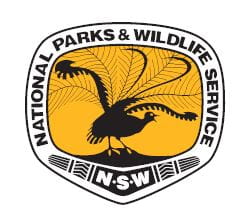
- NSW National Parks & Wildlife Service
Park info
- in Jenolan Karst Conservation Reserve in the Sydney and surrounds region
This reserve is open every day from 7am to 7pm. Check the Jenolan Caves website for information about guided tours, restaurants and events.
Visitor info
All the practical information you need to know about Jenolan Caves guided tours.
Getting there and parking
Get driving directions
Access to Jenolan on Jenolan Caves Road (5-Mile Road) is closed indefinitely. The only access is via Edith Road (2-Mile Road). This road is suitable for standard vehicles only. There is no access to Jenolan for caravans, trailers or any vehicle longer than a 12-seat minibus.
From Sydney:
- Travel west on the M4, which becomes the Great Western Highway at the foot of the mountains.
- Pass through Katoomba and Blackheath and turn left onto Jenolan Caves Road at Hartley.
- Drive through Hampton and turn right onto Duckmaloi Road. Do not continue along Jenolan Caves Road, access is closed.
- Continue along Duckmaoi Road for 20km, then turn left onto Titania Road.
- At the end of Titania Road, turn left onto Edith Road and continue until you reach Jenolan.
From Goulburn:
- Take Taralga Road out of Goulburn and travel north towards Taralga.
- Pass through Taralga and continue north on Taralga Road towards Oberon. Taralga Road turns into Abercrombie Road at the Abercrombie River.
- At Black Springs, turn right and continue on Abercrombie Road.
- At Oberon, turn right onto O’Connell Road and then left onto Carrington Avenue.
- Turn right onto Ross Street, then turn left onto Edith Road and continue until you reach Jenolan.
Please note:
- The last 5km of Edith Road is steep, narrow and winding, with several hairpin bends. Drive carefully and allow yourself plenty of time.
- Edith Road is not suitable for caravans, trailers or any vehicle longer than a 12-seat minibus.
- Traffic in and out of Jenolan is regulated for safety. Please check Live Traffic NSW before you set out.
Parking
Free parking available.
By bike
Check out the Bicycle information for NSW website for more information.
Maps and downloads
Accessibility
Disability access level - medium
- People using wheelchairs can request a wheelchair-accessible tour. Call 1300 76 33 11 for further information and to book.
- Also, there is a ramp at the entrance to Orient Cave, which leads up to the Binoomea Cut, a level, 122m man-made tunnel. This tunnel gives access into the first chamber of Orient Cave. Guides can provide a short tour focusing on the tunnel and the first chamber.
Learn more
Jenolan Caves guided tours is in Jenolan Karst Conservation Reserve. Here are just some of the reasons why this park is special:
Binomil
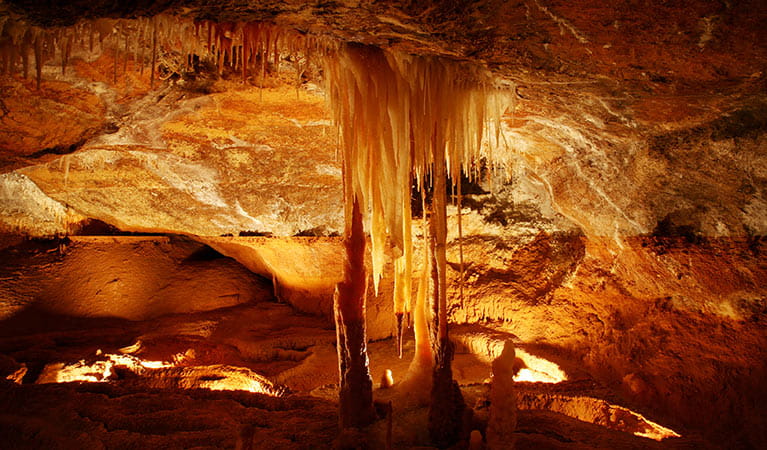
The beautiful and mysterious Jenolan Caves holds special significance to the Gundungurra people who knew it as 'Binoomea' meaning 'dark places'. According to Gundungurra Elder, Old Jimmy Lynch, Aboriginal people knew the caves, carrying sick people as far as the subterranean water which they believed to have great curative powers. The Dreamtime myth of Gurrangatch relates to the forming of Wombeyan and Jenolan Caves. The caves are said to have been formed during a contest between Gurrangatch, a mythical being that was part fish and part reptile, and Mirragan, a legendary tiger cat.
Greater Blue Mountains Area World Heritage Property
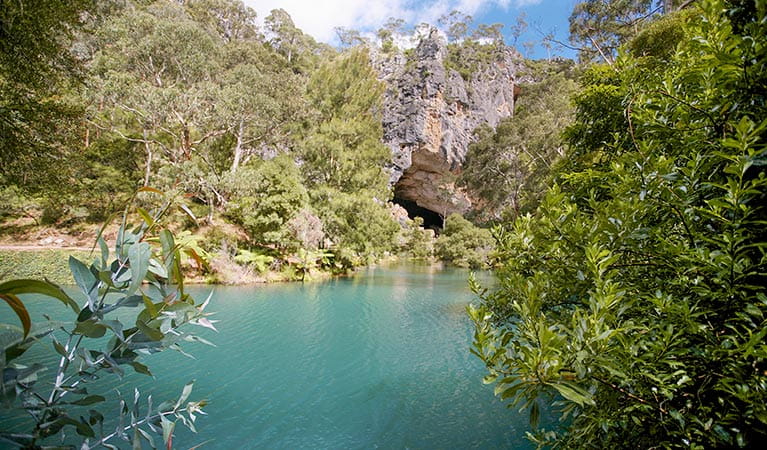
It is truly amazing to think that a city the size of Sydney has a large World Heritage Area on its doorstep. The World Heritage listing recognises the geographic, botanic and cultural values of the area. The forests of the Greater Blue Mountains Area World Heritage Property have been described as a natural laboratory for the evolution of eucalypts; and more than 90 different eucalypt species occur here, some 13 per cent of all eucalypt species in the world. They grow in a great variety of communities, from tall closed forests, through open forests and woodlands, to the stunted mallee shrublands on the plateaus.
Historic tourism
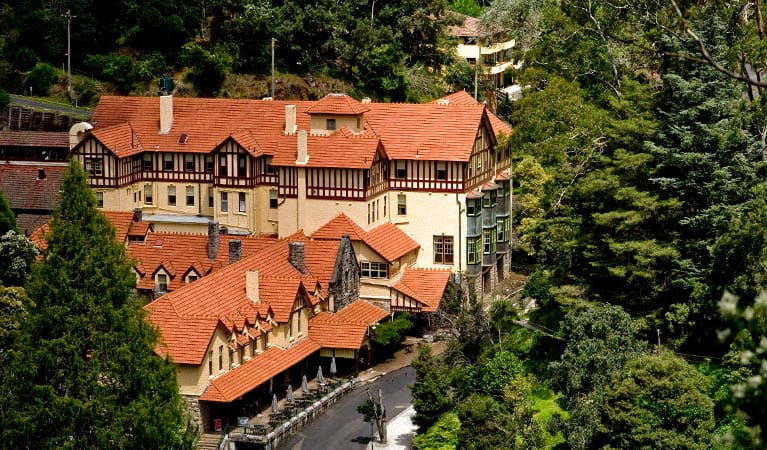
Jenolan Caves is one of Australia's first tourist attractions; with land having first been set aside for public recreation and enjoyment in 1866. In the years following this, a number of buildings were constructed, the most notable being Caves House; an excellent example of early Victorian architecture and comfortable heritage accommodation. Innovations in engineering and cave lighting are evident - particularly in Chifley Cave. There are more than 300 caves within the Reserve, all containing a range of geological features and formations, like stalactites and stalagmites, plus rarer helictites and stromatolites The best way to find out about the caves is on a guided or self-guided tour. There are eleven caves to choose from.
- Jenolan River walking track Jenolan River walking track and Blue Lake are closed after being damaged by fire and floods between 2020 and 2022. The track will re-open after infrastructure upgrades allow for a safe walking experience.
- McKeown's Valley walking track McKeown's Valley walking track, also known as Healing Waters walk, is a short and easy return walk at Jenolan Caves offering fantastic karst landscapes and wildlife spotting in the Blue Mountains.
Plants and animals protected in this park
Animals
-
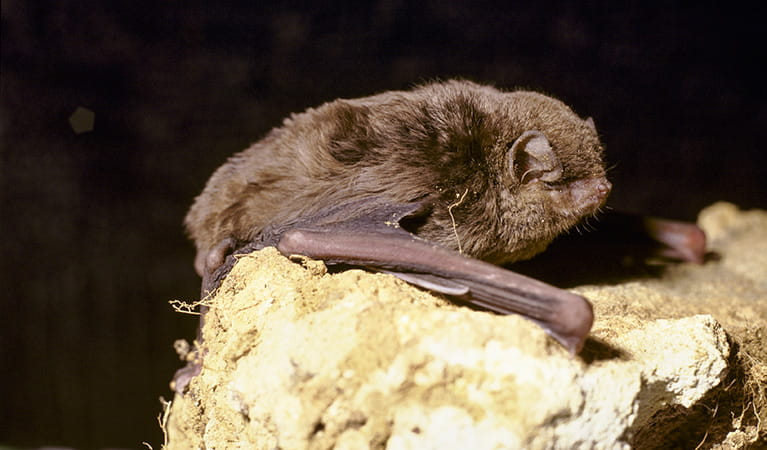
Eastern bentwing-bat (Miniopterus schreibersii oceanensis)
Eastern bentwing-bats congregate in caves across the east and north-west coasts of Australia, in colonies of up to 150,000. These small Australian animals weigh around 13-17g and can reach speeds of up to 50km per hour. Eastern bentwing-bats use both sight and echolocation to catch small insects mid-air.
-
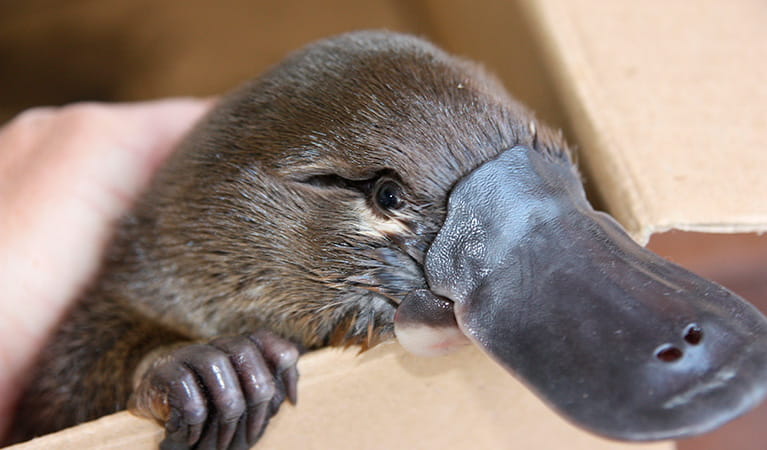
Platypus (Ornithorhynchus anatinus)
One of the most fascinating and unusual Australian animals, the duck-billed platypus, along with the echidna, are the only known monotremes, or egg-laying mammals, in existence. The platypus is generally found in permanent river systems and lakes in southern and eastern NSW and east and west of the Great Dividing Range.
-
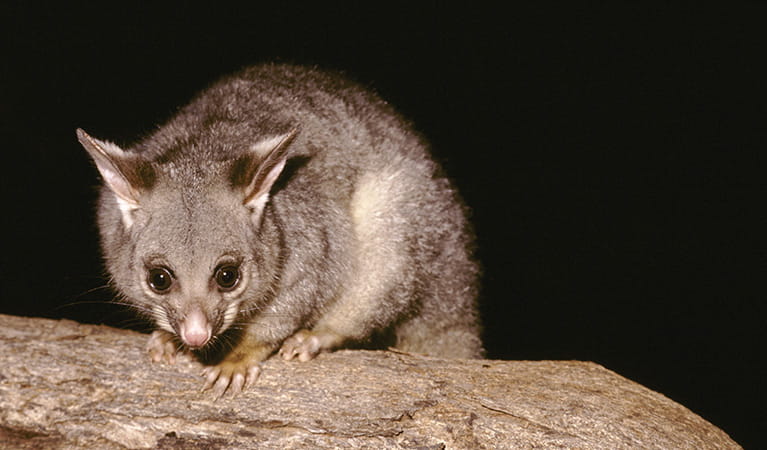
Common brushtail possum (Trichosurus vulpecula)
One of the most widespread of Australian tree-dwelling marsupials, the common brushtail possum is found across most of NSW in woodlands, rainforests and urban areas. With strong claws, a prehensile tail and opposable digits, these native Australian animals are well-adapted for life amongst the trees.
-

Bare-nosed wombat (Vombatus ursinus)
A large, squat marsupial, the Australian bare-nosed wombat is a burrowing mammal found in coastal forests and mountain ranges across NSW and Victoria. The only other remaining species of wombat in NSW, the endangered southern hairy-nosed wombat, was considered extinct until relatively recently.
-
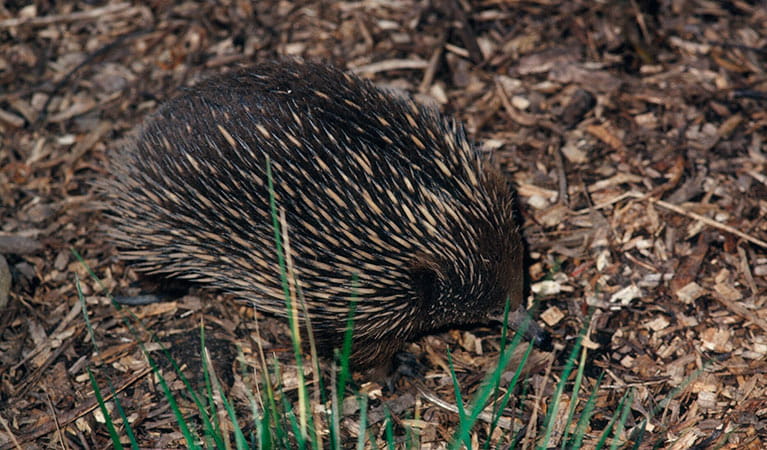
Short-beaked echidna (Tachyglossus aculeatus)
One of only 2 egg-laying mammals in the world, the short-beaked echidna is one of the most widespread of Australian native animals. Covered in spines, or quills, they’re equipped with a keen sense of smell and a tube-like snout which they use to break apart termite mounds in search of ants.
-
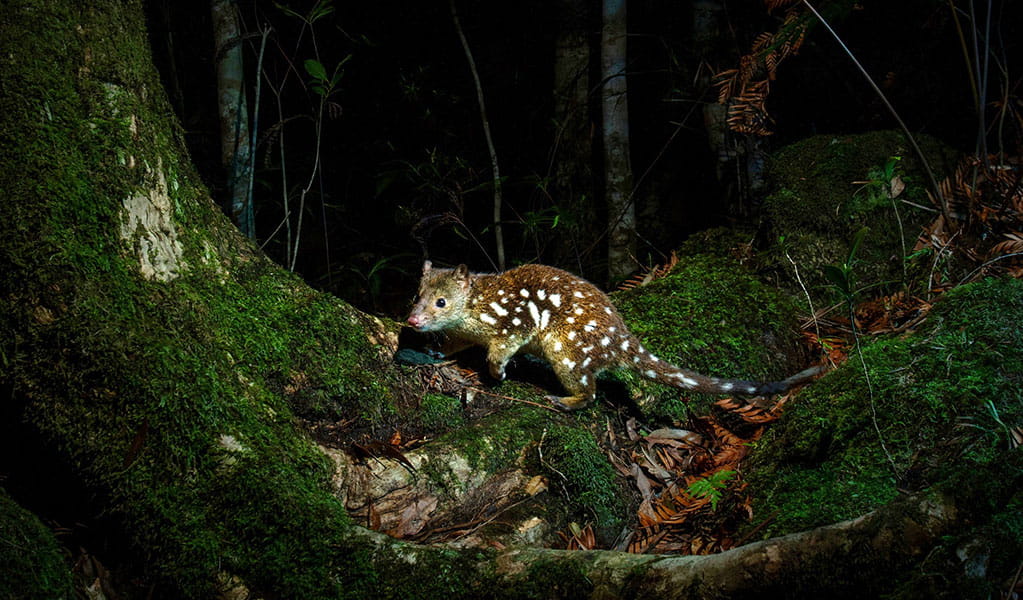
Spotted-tailed quoll (Dasyurus maculatus)
The spotted-tailed quoll is the largest remaining carnivorous marsupial on the Australian mainland. It’s protected as a vulnerable species in NSW.

